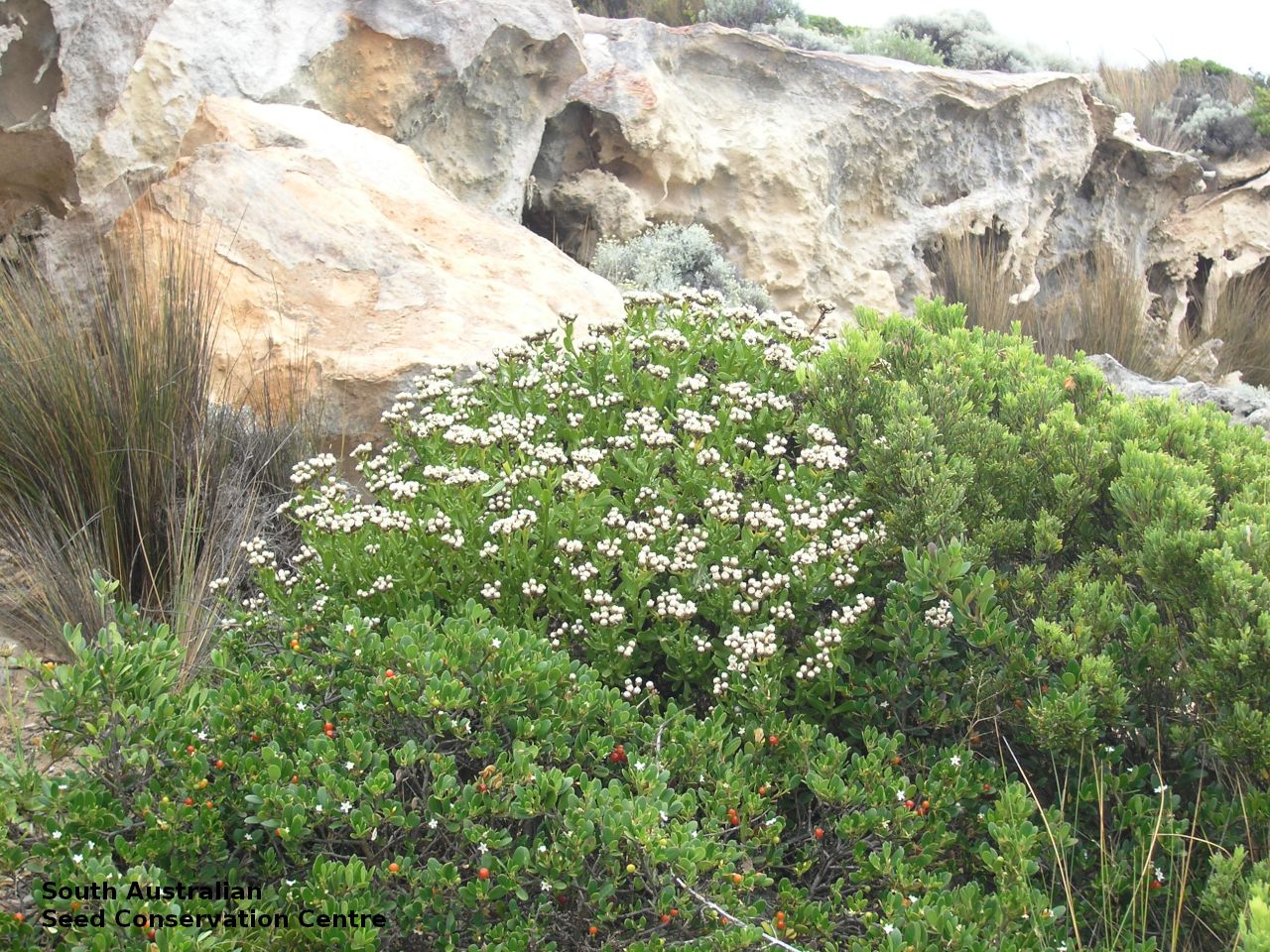
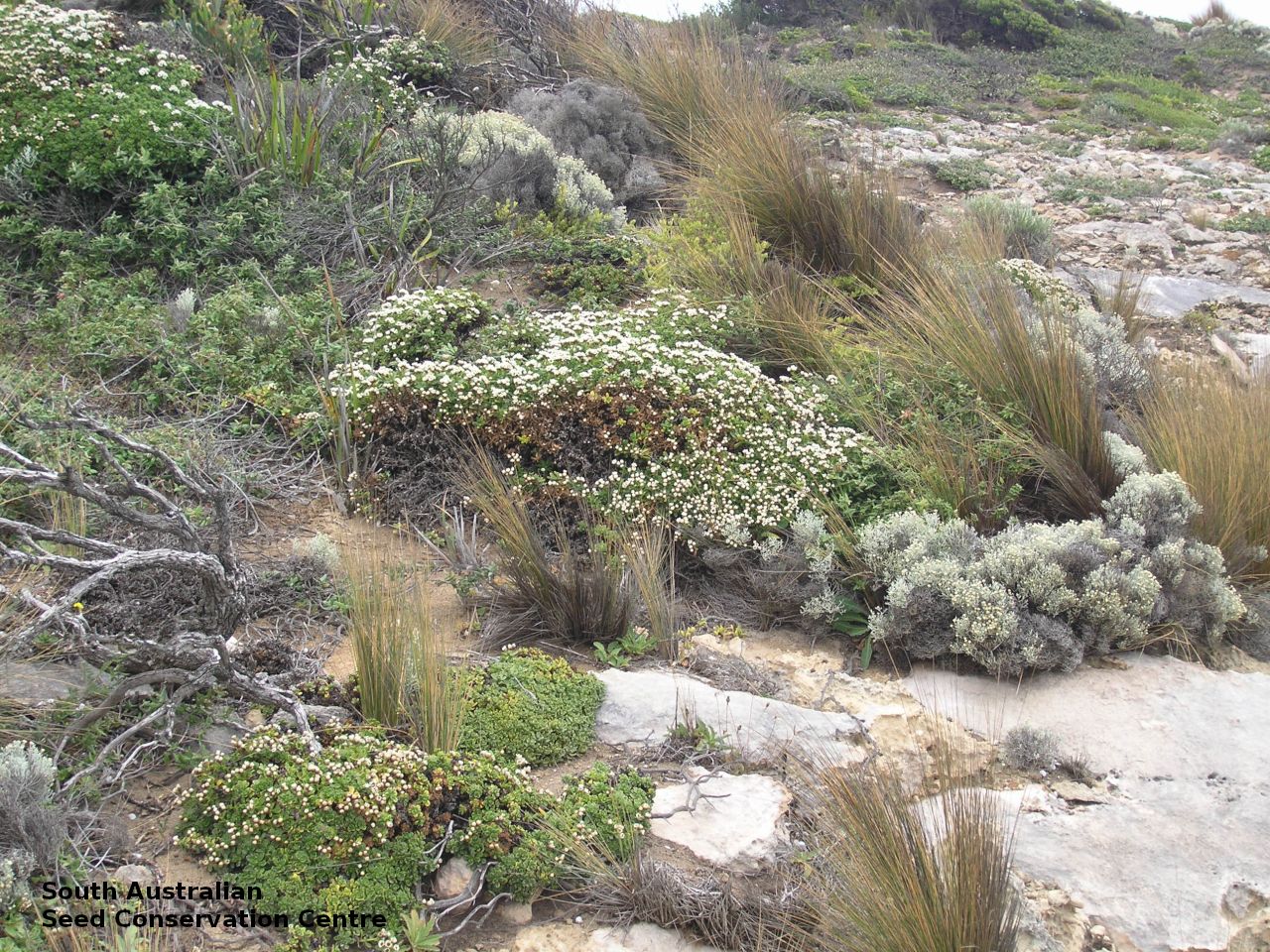
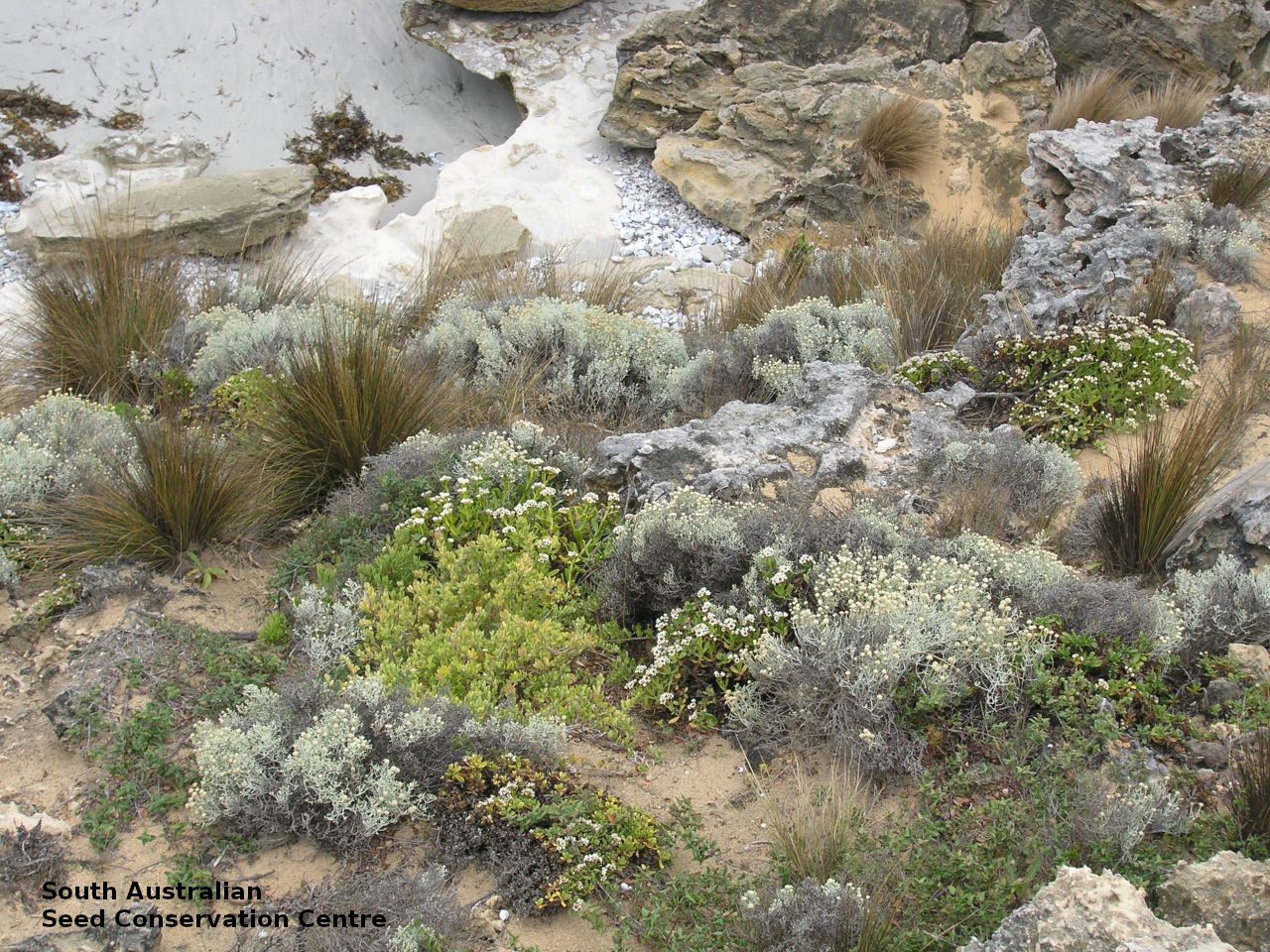
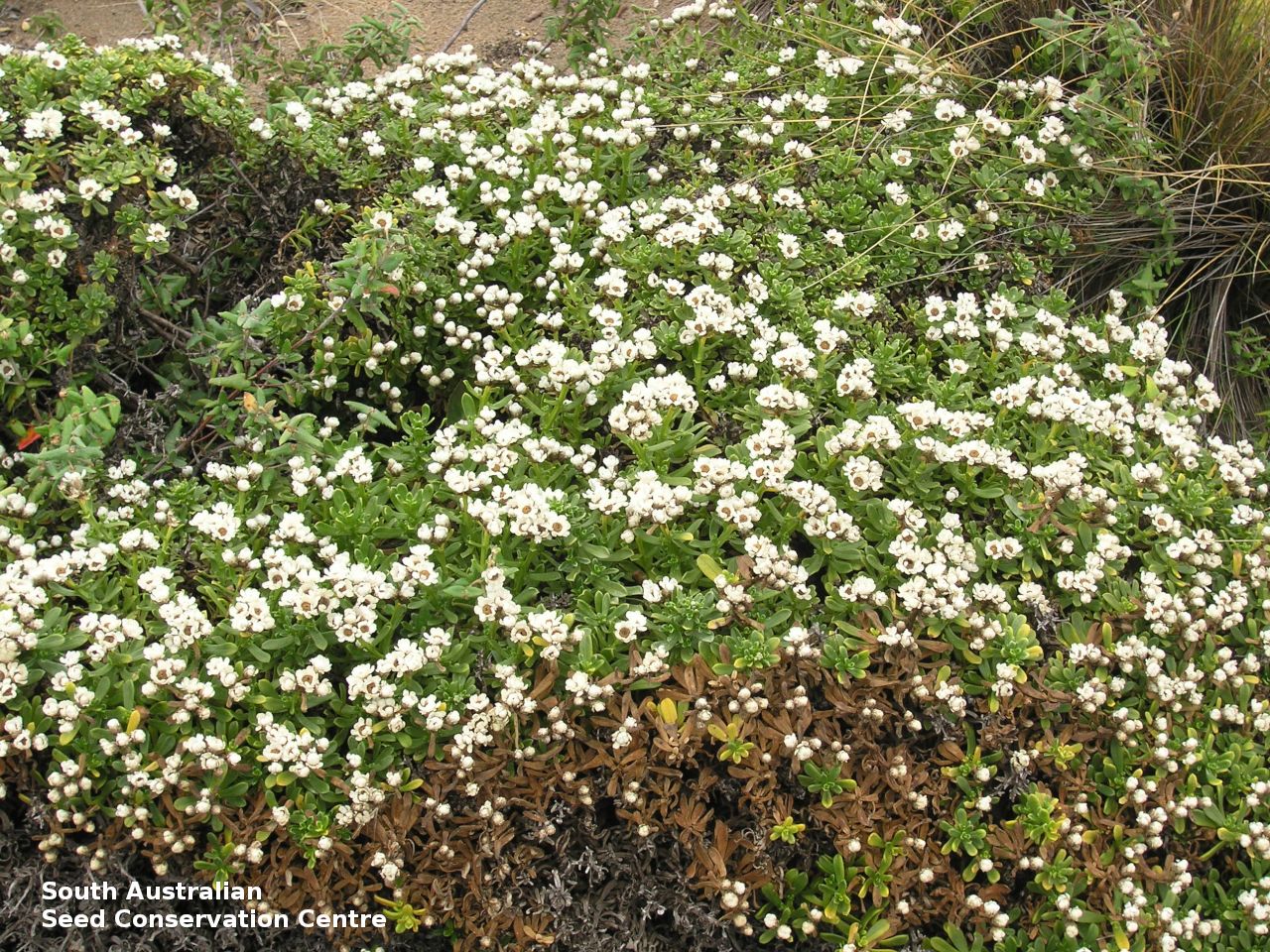
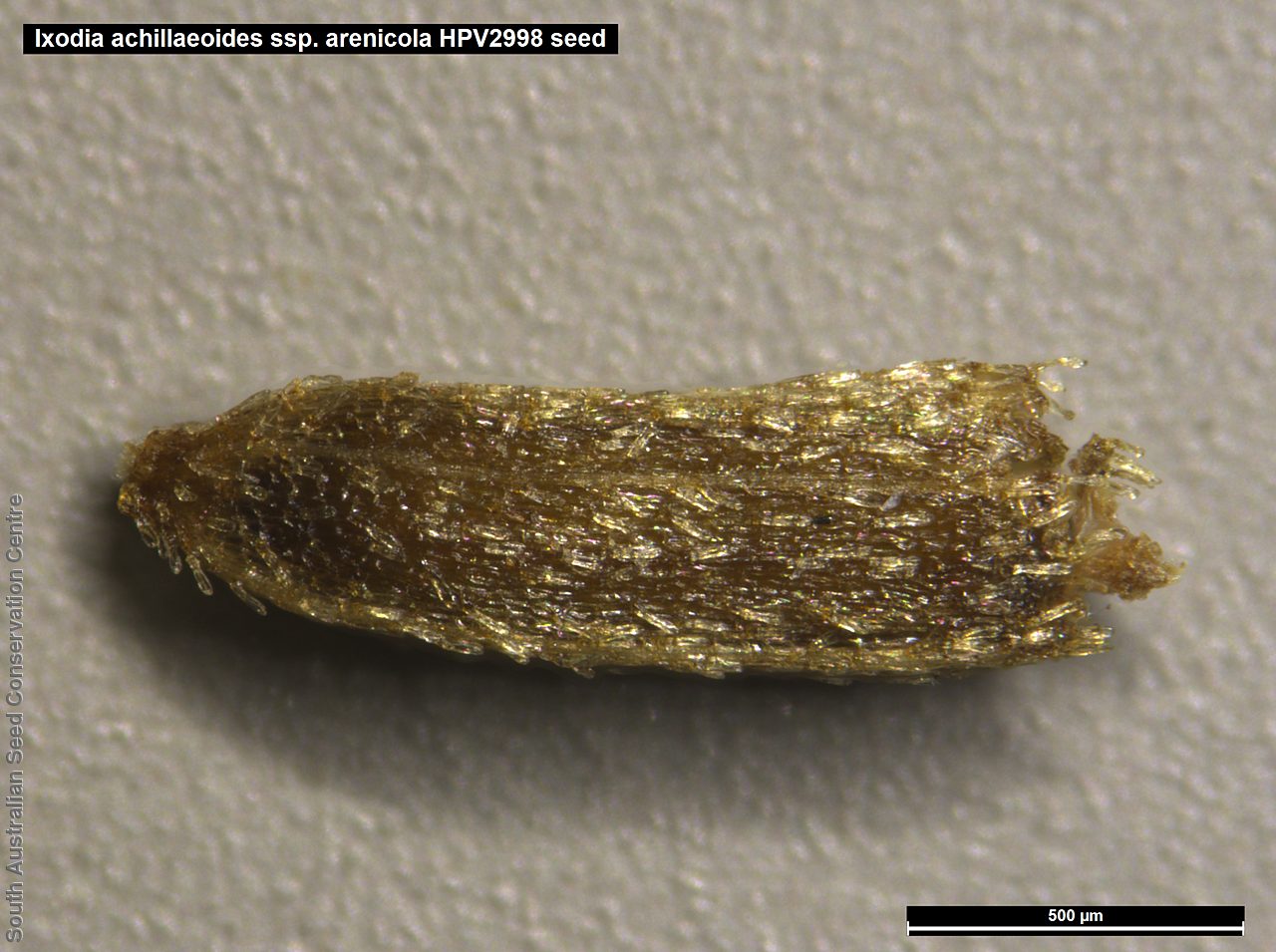
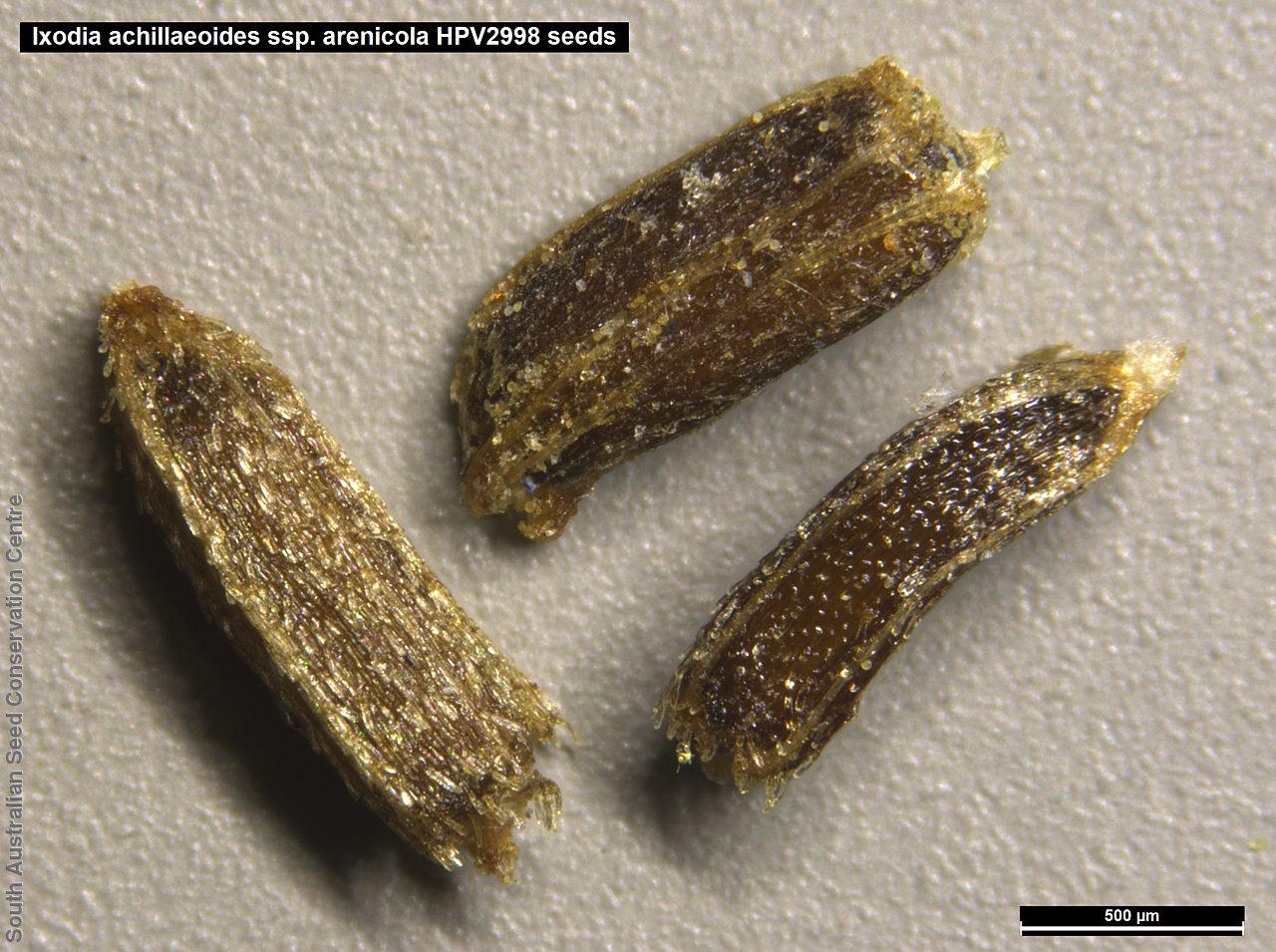
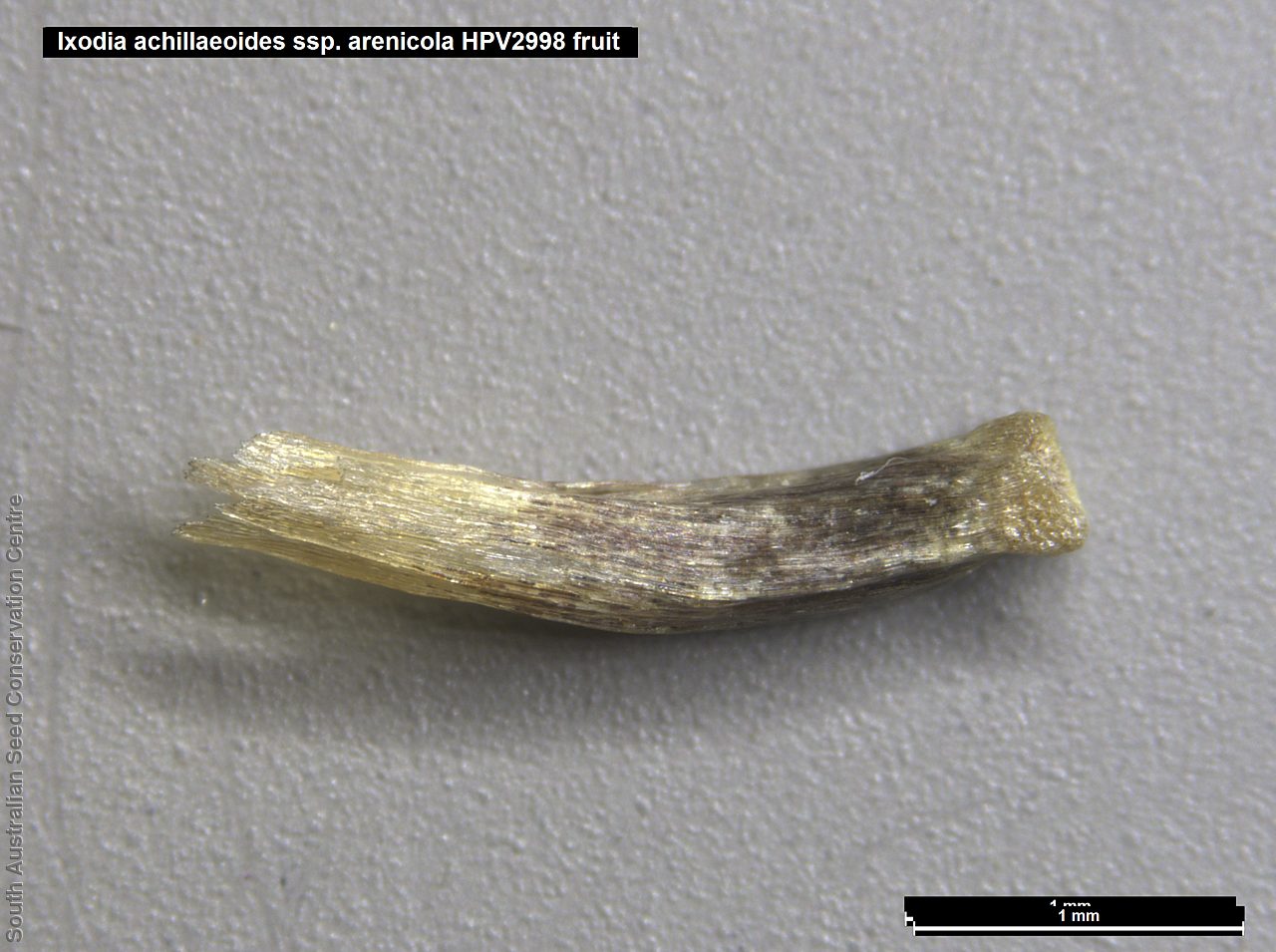
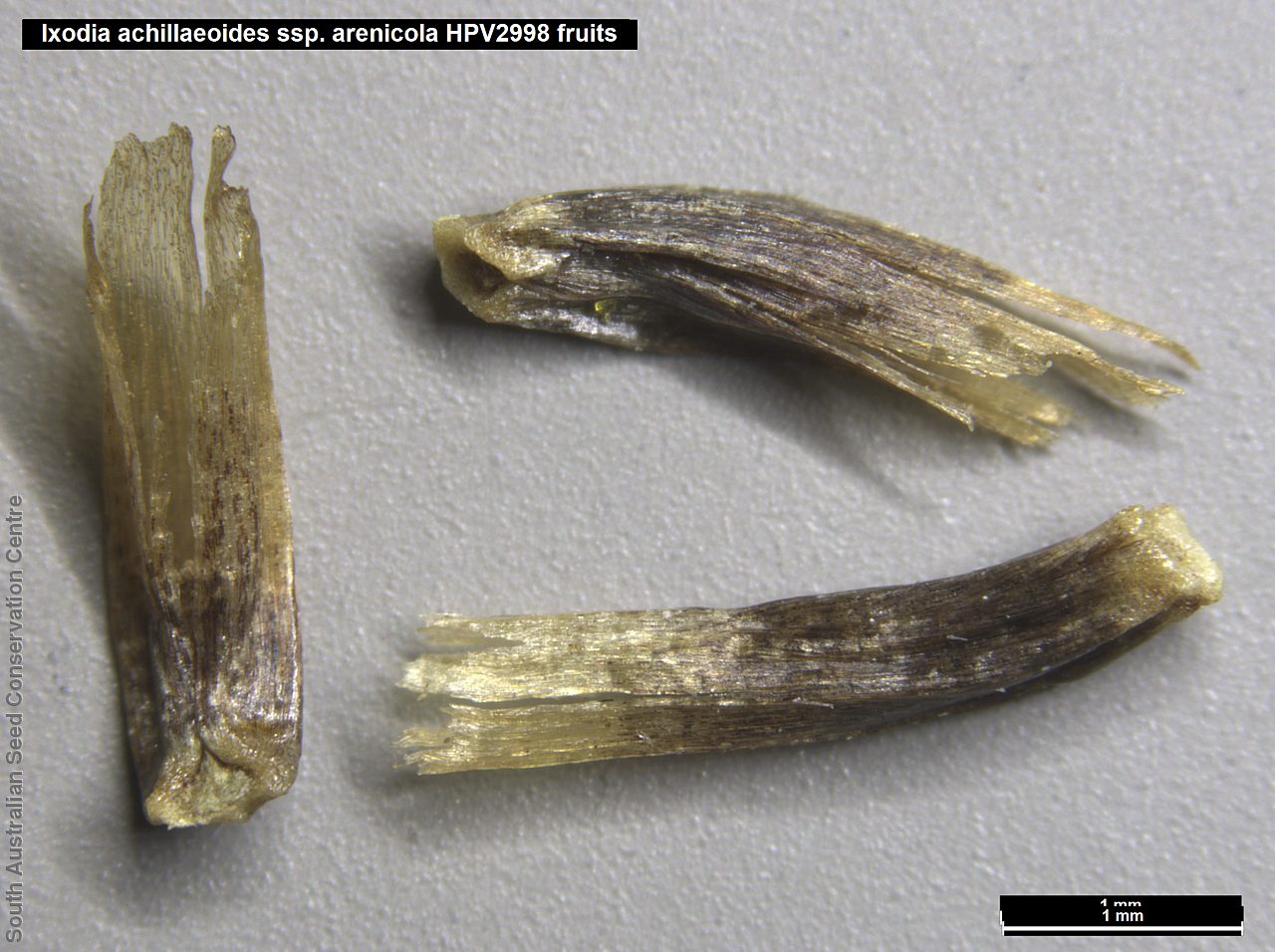

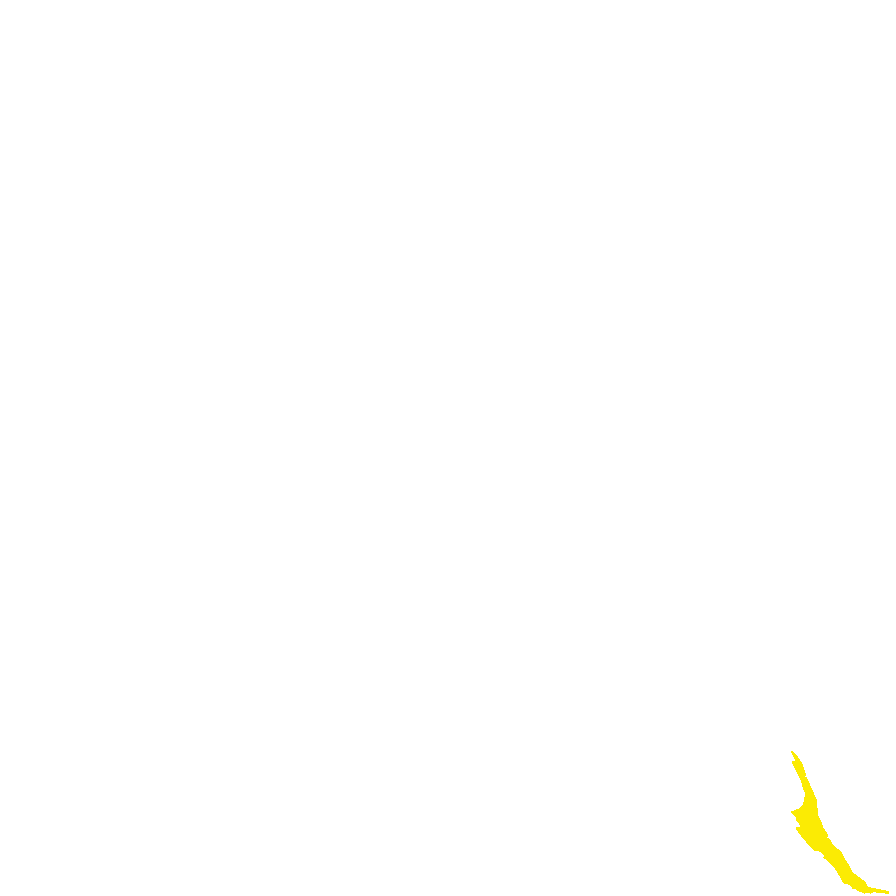
Botanical art
Etymology
Ixodia from the Greek 'ixodes' meaning sticky (from the Greek 'ixos' meaning mistletoe or birdlime); referring to the plant being sticky. Achillaeoides means resembling the genus Achillea (named after the Greek warrior Achilleios, who reputedly used plants from the genus to patch-up wounds). Arenicola from the Latin 'arena' meaning sand and 'cola' meaning dwelling; referring to its occurrence on the coast.
Distribution and status
Found only in the lower South-east in South Australia, growing on coastal sand dunes. Also found in Victoria. Native. Rare in South Australia. Very rare in Victoria.
Herbarium region: South Eastern
NRM region: South East
AVH map: SA distribution map (external link)
Plant description
Decumbent or ascending shrub to 50 cm high with stems ribbed, aromatic and viscid. Leaves linear to obovate, glabrous, viscid, dark green above, paler beneath, leathery, bases often with a narrow wing along stem. Flower-head clusters at terminal of short stalk with white papery daisy flowers. This subspecies differ from the other two subspecies by having obovate leaves (oblanceolate for I. achillaeoides ssp. achillaeoides and linear to lanceolate for I. achillaeoides ssp. alata) and found only on the coast in the lower South-east (coastal cliffs and exposed coastal sand dunes on the bottom of the Eyre and Yorke Peninsulas and Kangaroo Island for I. achillaeoides ssp. achillaeoides and mainly away from the coast for I. achillaeoides ssp. alata). Flowering between December and March. Fruits are white to Greyish brown papery head. Seed embryo type is spatulate.
Seed collection and propagation
Collect seeds between February and May. Collect whole heads that are drying off and turning greyish brown or collect just the seeds by plucking it off with your fingers. Mature seeds are easily removed. Place the heads in a tray for a week to dry. Then pluck the seeds from the head with your finders. Viable seeds will be fat and brown. Store the seeds with a desiccant such as dried silica beads or dry rice, in an air tight container in a cool and dry place.
| Location | No. of seeds (weight grams) | Number of plants | Date collected | Collection number Collection location | Date stored | % Viability | Storage temperature |
|---|---|---|---|---|---|---|---|
| BGA | 5,800 (1.27 g) | 22-Mar-2006 | C. Dixon South Eastern | 14-Sep-2006 | 50% | -18°C | |
| BGA MSB | 118,900 (23.78 g) 118,900 (23.78 g) | 1-Feb-2006 | HPV2998 South Eastern | 14-Sep-2006 | 50% | +5°C, -18°C |
Number of plants: This is the number of plants from which the seeds were collected.
Collection location: The Herbarium of South Australia's region name.
% Viability: Percentage of filled healthy seeds determined by a cut test or x-ray.